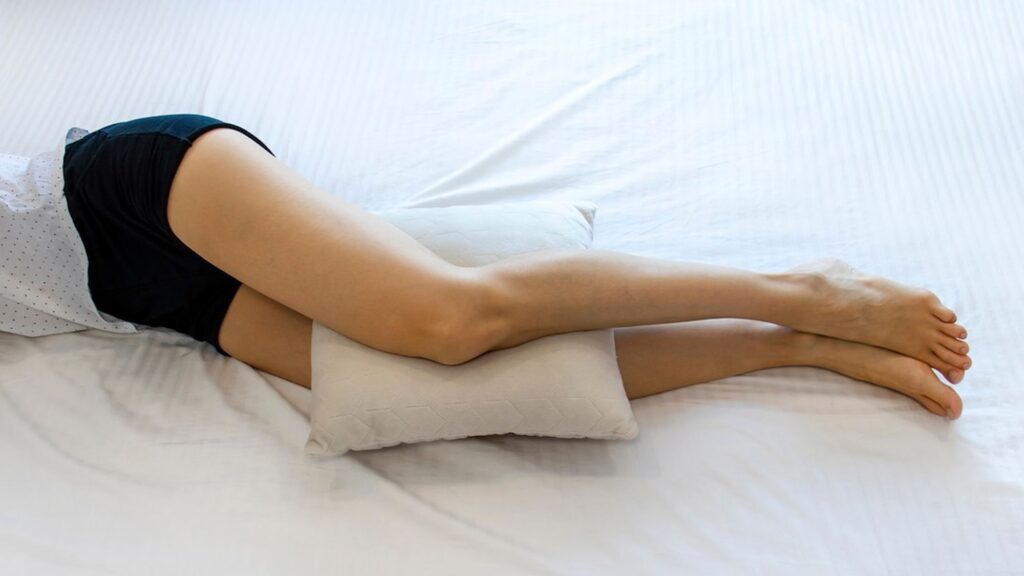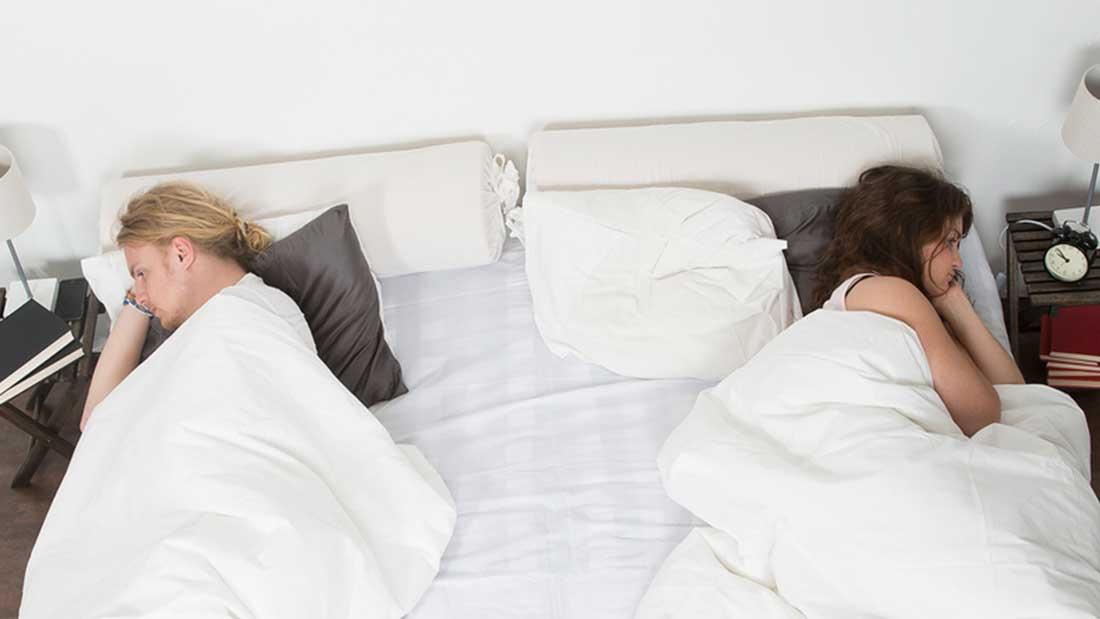
A recent viral TikTok from creator @Jordan_The_Stallion8 claims that, by sleeping with a pillow between your legs, you can increase your height. The creator breaks down his reasoning, explaining that poor posture, especially for those who spend the majority of their day sitting, leads to a shorter appearance, and using a pillow between your legs for eight hours a night encourages a more upright position. The end result: A two-inch increase in height in as little as two months.
To find out if gaining inches is doable merely by sleeping with a pillow between your knees, we spoke to Dr. Grant Radermacher, Doctor of Chiropractic at Ascent Chiropractic in Brookfield, Wisconsin, for his insight.
How Your Sleep Can Make a Difference To Your Height
“First of all, the idea that you can gain two inches in height just by adjusting your sleeping position is wildly optimistic — the biomechanics of the human body just don’t work like that,” explains Radermacher.
That being said, the position you spend eight hours per night in can definitely make a difference in the alignment of your pelvis, and that can indirectly affect your height, according to Radermacher.
Radermacher explains that the postural problem @Jordan_The_Stallion8 claims the pillow hack will correct is anterior pelvic tilt, aka “butt and gut syndrome.”
“Anterior pelvic tilt is another way of saying your pelvis is tilted forward; it’s caused by sitting with poor posture — or simply sitting too much — weak core and glute musculature, and tight lumbar extensors and hip flexors,” explains Radermacher.
If you have anterior pelvic tilt, you’ll notice your lower back arch is pronounced, your butt sticks out, and your stomach protrudes forward. It can also contribute to lower back pain and tightness, hip and knee problems, and spinal disc degeneration.
And yes — anterior pelvic tilt will also cause you to naturally stand a little shorter in height — just not a full two inches (unless you’re an extreme case), according to Radermacher.
How To Actually Improve Posture While You Sleep
To appear taller and take advantage of your height potential, fixing posture issues like anterior pelvic tilt will help. “Generally, fixing anterior pelvic tilt requires stretching the muscles that are tight, strengthening the muscles that are weak, and maintaining a neutral pelvis position as much as you can throughout both the day and night,” advises Radermacher.
When it comes to sleeping positions, there are some positions that help and others that hurt to sleep in if you want to keep your pelvis in perfect alignment.
Bad news if you sleep on your stomach; Radermacher says it’s generally the worst sleeping position. “I generally tell stomach sleepers to switch to their back or side, but if you absolutely can’t get to sleep any other way, put a pillow under your lower abdomen and pelvis — it’ll help keep your pelvis in a more neutral position and take pressure off your spine.” You can also look into good mattresses for stomach sleepers to find supportive options.
If you’re a back sleeper, Radermacher suggests propping a pillow or foam wedge under your knees and lower buttocks. “This helps keep your pelvis in a neutral position and allows the muscles in the lower back to relax,” he says. He also recommends elevating your knees and thighs two or three inches above your sleeping surface.
Finally, if you’re one of the 74 percent who sleep on your side, learn to sleep with a pillow between your knees: It keeps the top leg from dropping to the mattress and putting the pelvis into a torqued, anteriorly-tilted position, according to Radermacher. It also minimizes pressure points on your back, hips, and neck.
Pillow choice and placement are crucial, though. “The pillow should be small enough to not feel awkward between your legs, yet big enough to keep you from rolling onto your stomach,” Radermacher explains.
And don’t forget the rest of your lifestyle choices. Take breaks from sitting to move around, strengthen your core muscles, including your back, glutes, and abdominals, and work on your flexibility and mobility so you can stand taller, naturally.

Going to Bed With Wet Hair? This Viral TikTok Will Change Your Mind

What Experts Say About the “Bed Rotting” Trend and Its Claims to Boost Mental Health

Everything You Need To Know About Lettuce Water And Sleep

“Hot Bedding,” Where Strangers Share a Bed, Is On the Rise
Sources
Radermache, Grant. Author interview. July 2024.
Falk Brekke, A., Overgaard, S., Hróbjartsson, A., & Holsgaard-Larsen, A. (2020). Non-surgical interventions for excessive anterior pelvic tilt in symptomatic and non-symptomatic adults: a systematic review. EFORT Open Reviews, 5(1), 37-45. Retrieved Jul 13, 2024, from https://doi.org/10.1302/2058-5241.5.190017




























